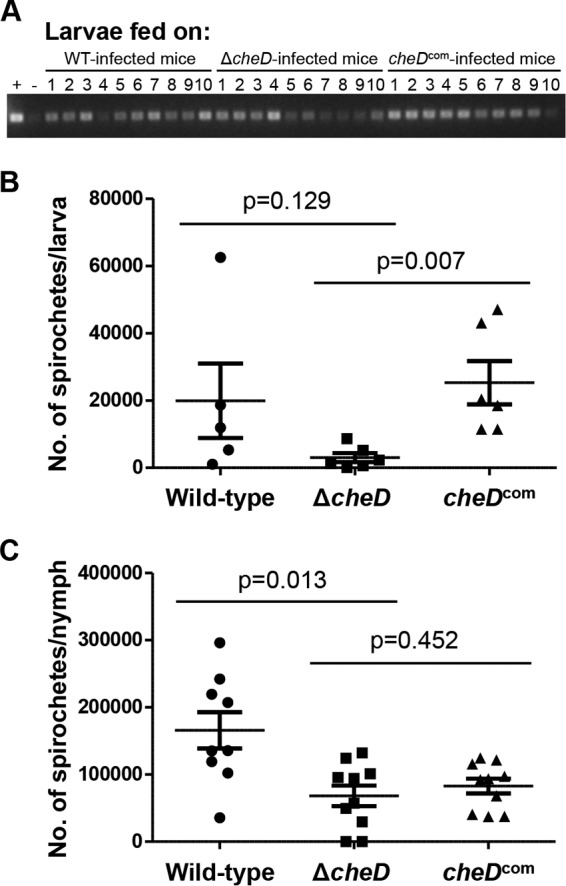FIG 5.

Naive ticks are able to acquire and transmit ΔcheD mutant spirochetes during mouse-tick-mouse infection studies. (A) Naive ticks were allowed to feed on infected mice to determine acquisition of spirochetes. Ten larvae fed upon the wild-type, ΔcheD, or complemented-spirochete-infected mice were squashed individually to isolate DNA. The DNA samples were then used to detect B. burgdorferi flaB by PCR. The PCR data indicated that 100% of the larval ticks were able to acquire the spirochetes from B. burgdorferi-infected mice (all groups). Tick DNA that we had previously confirmed to be spirochete positive was used as a positive control (+), and double-distilled water (ddH2O) was used as a negative control (−). (B) ΔcheD mutant spirochetes are able to survive in fed larvae. Viable ΔcheD spirochetes in fed larvae are reduced compared to the wild-type or complemented cells. The P values shown were determined by using ANOVA, as described in Materials and Methods. A P value of ≤0.05 between samples was considered significant. (C) Mutant spirochetes are able to survive in fed nymphs, but the number of viable ΔcheD cells in fed nymphs is considerably less than that of the wild type (P = 0.013) but not statistically different from that of the cheDcom cells (P = 0.452). The P values were determined as for panel B, and significance was defined as a P value of ≤0.05. A representative result from two independent studies with different batches of ticks is shown. The bars represent the numbers of mean viable spirochetes per tick ± standard errors of the mean (SEM).
